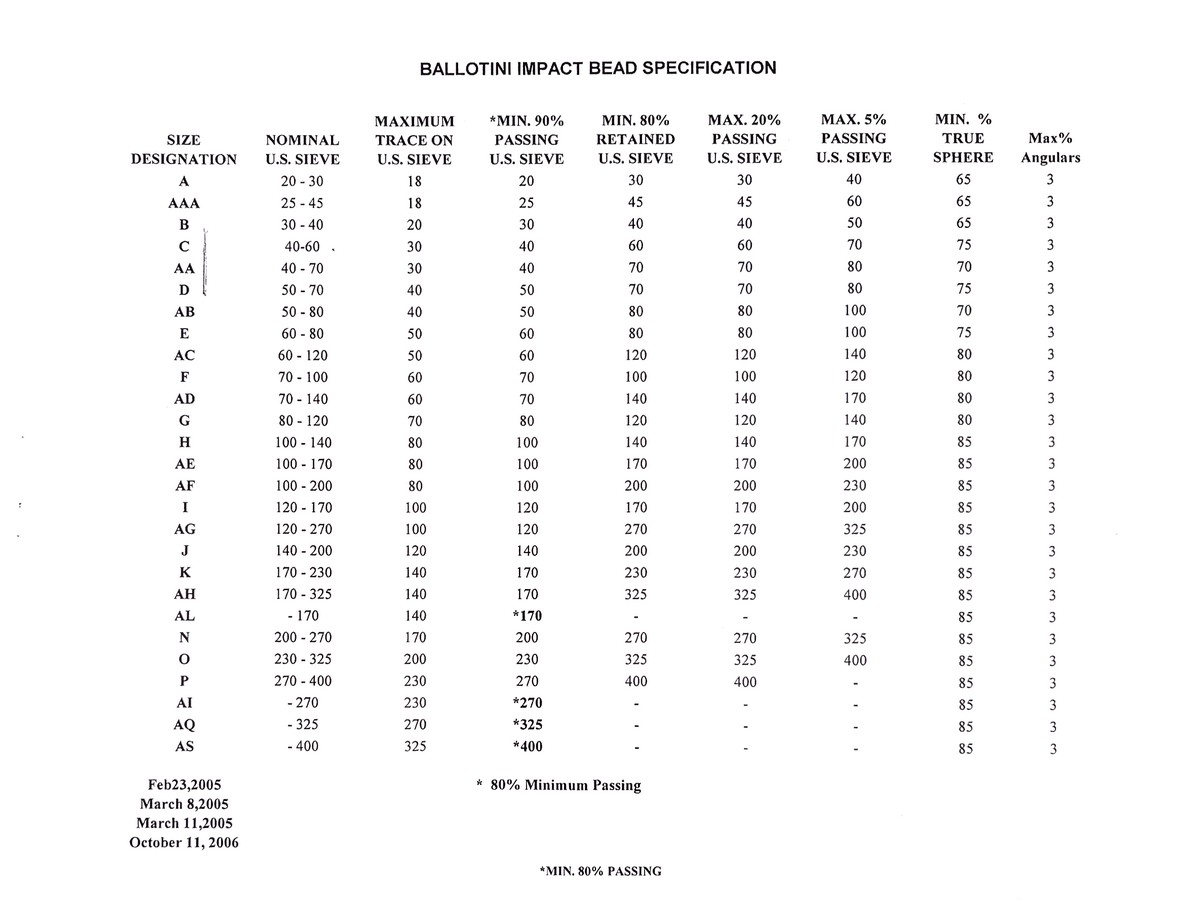Alright, gather ‘round, folks! Let's talk about something *absolutely* riveting: glass bead blasting media. I know, I know, you’re thinking, “Glass beads? Sounds about as exciting as watching paint dry…on a particularly cloudy day.” But trust me, once you understand this stuff, you’ll be the life of every party. Or, at the very least, you’ll know the perfect bead size to achieve that *perfect* satin finish on your… uh… whatever needs a satin finish! We’ll dive into the amazing world of the glass bead blasting media size chart!
So, picture this: you've got a rusty old widget, maybe it's a vintage toaster or a hubcap from your great-uncle’s jalopy. You want to restore it to its former glory, to a state of pristine, shiny…ness. But sandpaper? Too much elbow grease! Chemical dips? Too smelly! Enter: glass bead blasting. It’s like a tiny, controlled sandstorm of awesomeness. But choosing the right size of "sand" makes all the difference.
The Glass Bead Blasting Media Size Chart: Decoded! (Sort Of)
Here's the deal. Glass bead blasting media sizes are usually described using a fancy-pants numbering system. Think of it like shoe sizes, but instead of feet, we’re measuring… well, tiny spheres of glass. The numbers correlate to the mesh size, which essentially refers to the number of wires per inch in the sieve used to sort these little guys. Confused? Don't worry, everyone is at first!
Basically, a *higher* number means *smaller* beads. It’s like the opposite of golf. Lower score is better… except in this case, a *lower* number means *bigger* beads. Got it? Great! If not, just nod and pretend you do. I won’t tell.
Think of it this way: Imagine trying to pour coffee grounds through a window screen (high mesh number = small beads). Easy, right? Now try pouring pebbles through that same screen (low mesh number = big beads). Not so easy. You’d need a much bigger screen (a lower mesh number) to let those pebbles through.
So, Which Bead Size Should You Choose?
This is where the fun begins! The “right” size depends entirely on what you’re trying to achieve. Are you going for a gentle cleaning or a more aggressive surface treatment?
- Smaller Beads (e.g., 170-325 Mesh): These are your finesse beads. They're great for creating a *smooth, satin finish* on delicate materials like aluminum or softer metals. Think of them as the spa treatment for your rusty toaster. They gently exfoliate away the grime, leaving a radiant, glowing… toaster. Okay, maybe not glowing. But definitely cleaner!
- Medium Beads (e.g., 80-170 Mesh): The all-purpose workhorses of the bead blasting world. Good for general cleaning, removing light rust, and preparing surfaces for paint or powder coating. They’re like the Swiss Army knife of blasting media. Not quite as gentle as the small beads, but not as aggressive as the big boys.
- Larger Beads (e.g., 40-80 Mesh): Bring out the big guns! These are your heavy-duty rust busters. They’re ideal for removing scale, heavy corrosion, and creating a more *aggressive profile* for better paint adhesion. Use these on really stubborn stuff, like that bolt you accidentally left in your garden for three years. Just be careful, these beads can be a bit rough on delicate surfaces. Using these on your toaster would be like giving it a deep-tissue massage with a jackhammer.
Important Side Note: Remember to always test a small, inconspicuous area first! You don't want to accidentally turn your vintage toaster into a modern art sculpture of pitted metal. Unless, of course, that's your thing. No judgment here.
Beyond the Size Chart: Other Things to Consider
Okay, so you’ve mastered the size chart (or at least, you’re pretending to). But there's more to bead blasting than just size. You also need to think about:
- Air Pressure: Too much pressure, and you'll warp your workpiece. Too little, and you might as well be blowing bubbles at it.
- Nozzle Distance: Getting too close is not always a good idea.
- Your Protective Gear: Seriously, wear a mask and eye protection! You don't want to spend the afternoon picking glass beads out of your eyebrows (trust me, I've been there).
Fun Fact: Did you know that glass beads are often made from recycled glass? So, you're not just restoring your rusty widget, you're saving the planet… one tiny glass sphere at a time!
In conclusion, understanding the glass bead blasting media size chart is like unlocking a secret code to achieving the perfect surface finish. With a little practice (and maybe a few accidental mishaps), you'll be a bead-blasting pro in no time! So, go forth, experiment, and unleash your inner artisan. Just remember to wear your safety glasses, and maybe keep that jackhammer away from the toaster.





